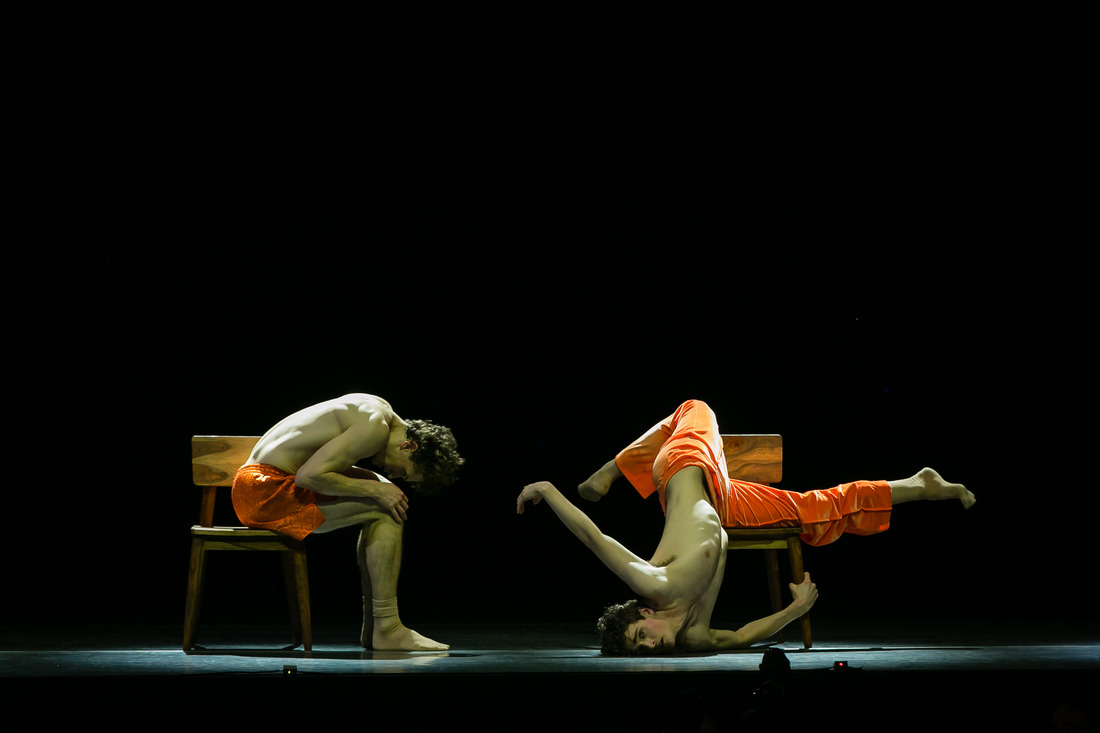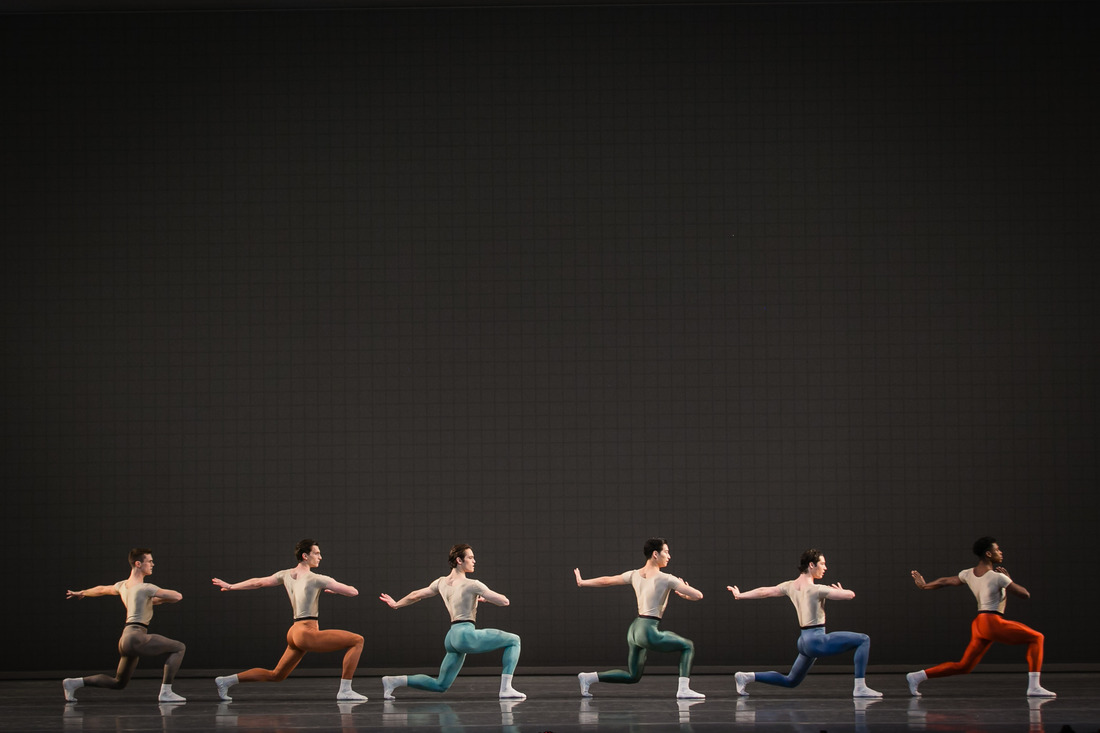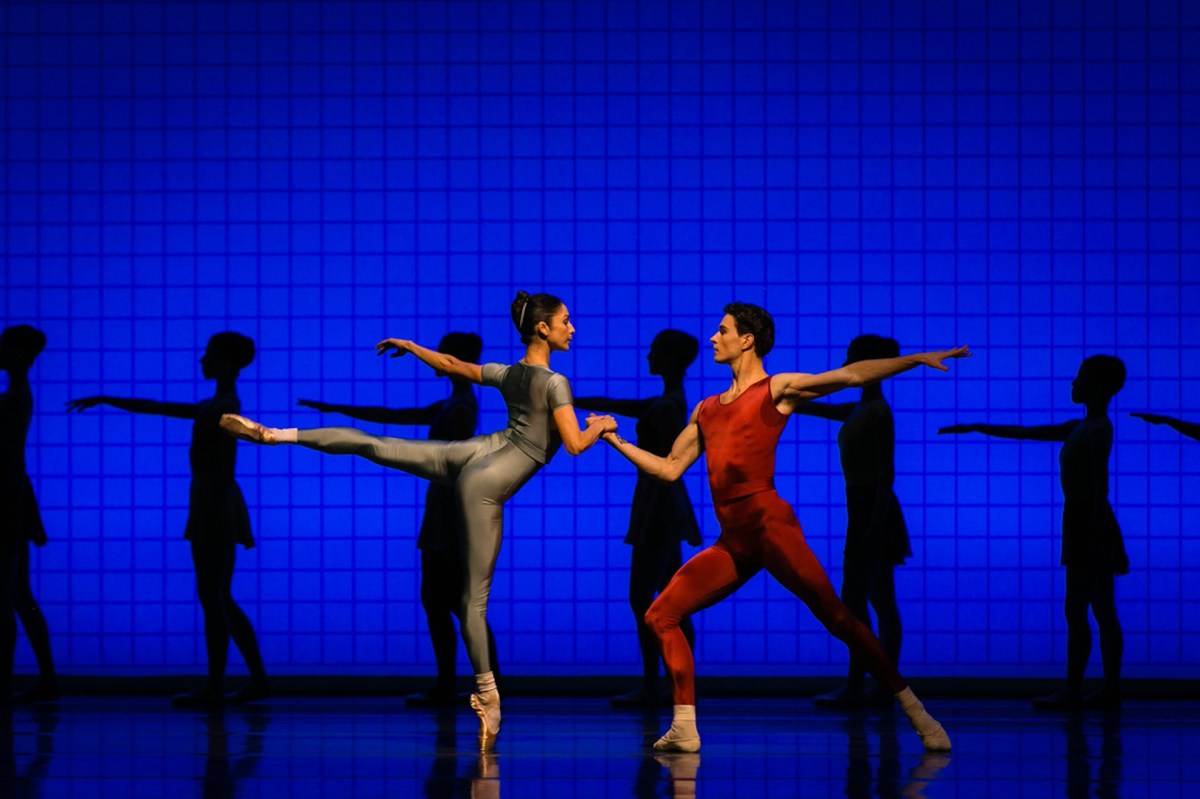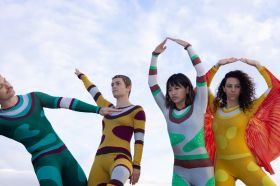Prism – quick links
Before introducing Australian Ballet’s latest triple bill, Prism, Artistic Director David Hallberg pays homage to the company’s history, and the dancers and creatives that have made its ongoing evolution possible.
Prism features Jerome Robbins’ Glass Pieces (first performed by New York City Ballet in 1983), William Forsythe’s adaptation of his Barre Project for the Australian Ballet, and the world premiere of Stephanie Lake’s new work, Seven Days.
Prism: Seven Days

Seven Australian Ballet dancers find themselves in Lake’s creation. It plays with established patterns of time, rhythm and movement to create something unique. Set to Johann Sebastian Bach’s Goldberg Variations, expertly reimagined by Peter Brikmanis, Seven Days is comforting in moments of familiarity, and entirely unpredictable.
An opening canon runs through the seven dancers, showing Australian Ballet’s capability for precision and technicality that sometimes feels lacking in Glass Pieces. With moments of humour and unexpected interactions (a sharp block with an arm to a brief kiss on the nose, or uncomfortable freezes throughout a beautiful game of musical chairs), Seven Days breathes fresh life into Bach’s melodies.
Kate Davis’ costume design is effective in showcasing the individuality of dancers, with a fiery colour palette marking them as a collective. Lake and Bosco Shaw continue their collaborative efforts from Colossus and Manifesto with Shaw’s simple but demanding lighting design in Seven Days.
Prism: The Barre Project

Forsythe’s The Barre Project began during the pandemic, celebrating and sustaining dancers who kept their skills and artform moving forward using any form of barre available to them at home. It shows Forsythe’s global focus and impact. He has now adapted a number of subsequent ‘Blake Works’ for companies across the world, with the original Barre Project central to each adaptation.
Blake Works V, created for the Australian Ballet, is a thrilling exploration of what the company’s dancers can do and what the artform is capable of. It is neither a celebration or rejection of classical conventions, but shows one path forward for the future of ballet.
Solos are distinct, but run seamlessly, with delightful inversions of expected movements – whether it be Benedicte Bemet’s inhuman and exquisite work through her spine or a transition from eerie barre work to an electric cha cha between Samara Merrick and Callum Linnane.
Prism: Glass Pieces

Neither Lake or Forsythe’s works feel like they could be danced by any other company. Yet in Robbin’s Glass Pieces, it feels like The Australian Ballet is stepping into the shoes of New York City Ballet and they don’t quite fit.
Glass Pieces showcases Robbin’s distinct style that moves between broadway and ballet, with hypnotic patterns created across the stage, and the odd flexed foot or pop of the hip. Yet with its 40-odd cast and heavy reliance on the corps, it requires a precision and unison in ensemble work that the dancers didn’t hit on opening night. Without that, it lost its power and took viewers out of the moment.
Robbin’s work was otherwise well executed, with lighting and set design nicely reproduced for the production. But, especially next to Seven Days and Blake Works V, Glass Pieces feels like a production put on by Australian Ballet rather than a work that couldn’t be done without them.






